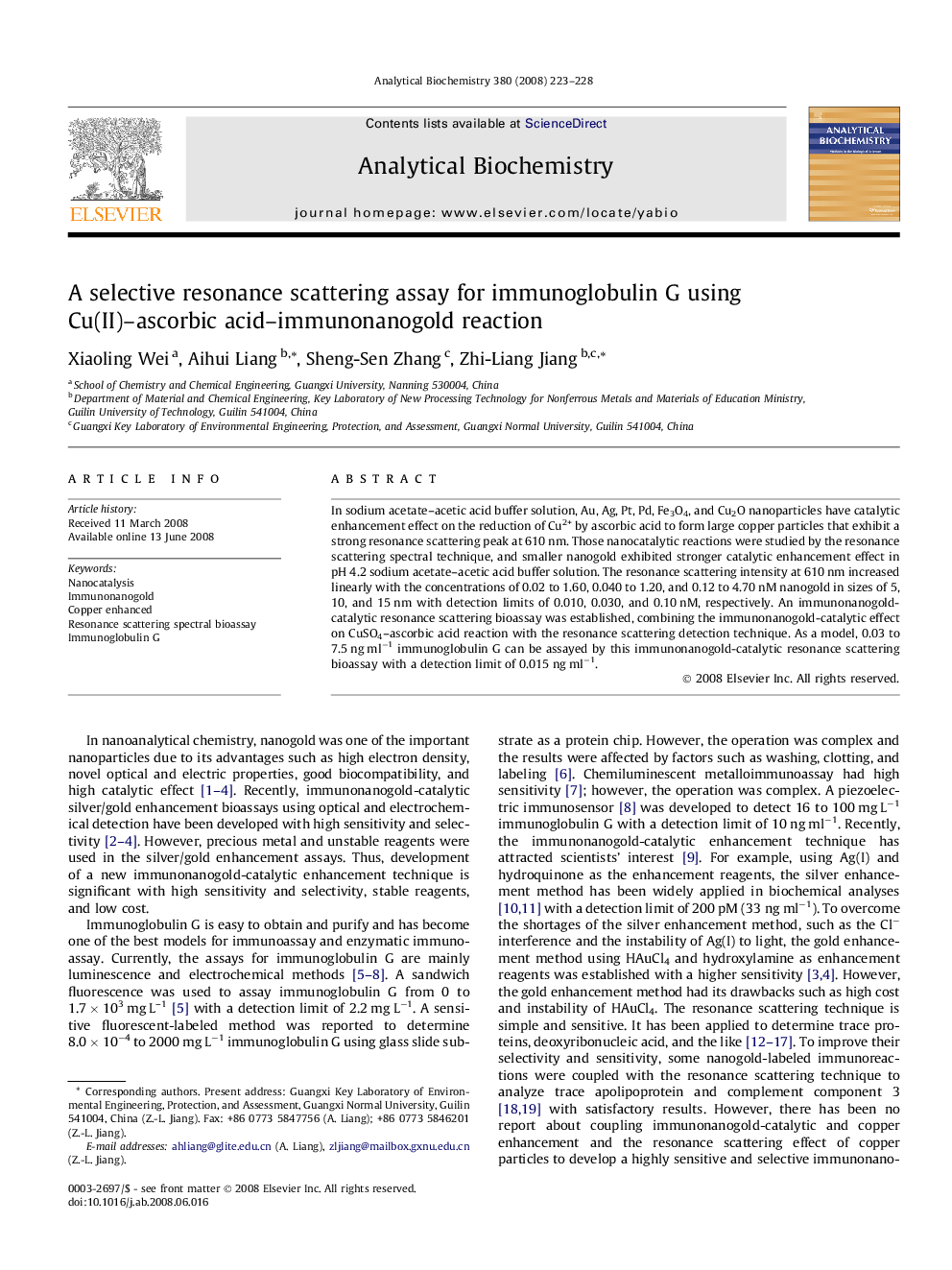| Article ID | Journal | Published Year | Pages | File Type |
|---|---|---|---|---|
| 1177155 | Analytical Biochemistry | 2008 | 6 Pages |
In sodium acetate–acetic acid buffer solution, Au, Ag, Pt, Pd, Fe3O4, and Cu2O nanoparticles have catalytic enhancement effect on the reduction of Cu2+ by ascorbic acid to form large copper particles that exhibit a strong resonance scattering peak at 610 nm. Those nanocatalytic reactions were studied by the resonance scattering spectral technique, and smaller nanogold exhibited stronger catalytic enhancement effect in pH 4.2 sodium acetate–acetic acid buffer solution. The resonance scattering intensity at 610 nm increased linearly with the concentrations of 0.02 to 1.60, 0.040 to 1.20, and 0.12 to 4.70 nM nanogold in sizes of 5, 10, and 15 nm with detection limits of 0.010, 0.030, and 0.10 nM, respectively. An immunonanogold-catalytic resonance scattering bioassay was established, combining the immunonanogold-catalytic effect on CuSO4–ascorbic acid reaction with the resonance scattering detection technique. As a model, 0.03 to 7.5 ng ml−1 immunoglobulin G can be assayed by this immunonanogold-catalytic resonance scattering bioassay with a detection limit of 0.015 ng ml−1.
